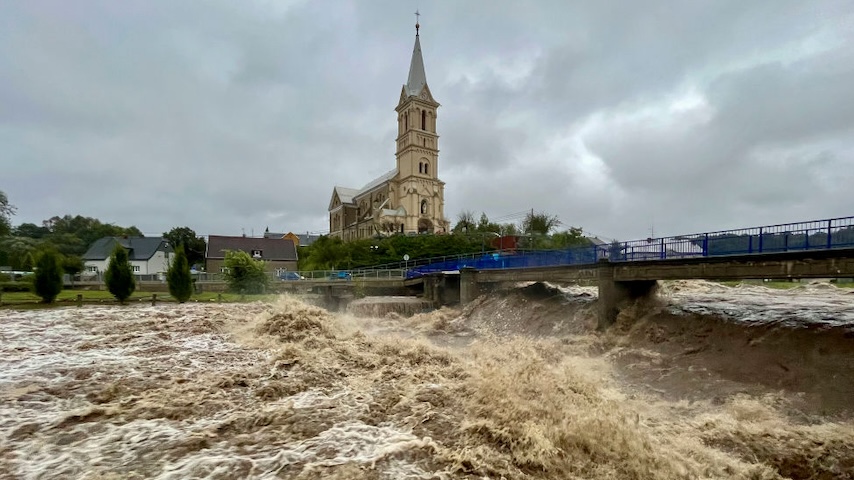Warming Made Europe’s Flooding Twice as Likely
Photo by Gabriel Kuchta/Getty Images
As I wrote just six days ago, as major floods plagued four continents, scientists would likely soon tell us the specific role climate change played in some or all of those floods. Fingerprint studies that can measure warming’s impact are now faster than ever, and World Weather Attribution has quickly answered the question for central Europe’s devastating flooding: climate change doubled the chances, and made the rainfall slightly more intense.
One measure these studies examine is known as the return period — essentially the odds of a given event happening in any one year, put into a shorthand where we call something with a one percent chance a 100-year event. Return periods are changing as the world warms, in some cases dramatically — massive rainstorms in particular are seeing their return periods drop, thanks to the atmosphere’s ability to hold far more moisture. In this case, the Europe floods have a return period in our current climate somewhere between 100 and 300 years — and if that range seems a bit wide, there’s a reason:
“As the event is by far the heaviest ever recorded, the exact return time is difficult to estimate,” scientists wrote. With around a century’s worth of observations, these four days of downpour simply have no precedent; modeling can only do so much.
They also found that the 1.3 degrees Celsius of warming currently baked into the system made this particular storm twice as likely as in an undisturbed atmosphere, and the rainfall intensity was seven percent higher. Due to some other limitations with the modeling, though, the authors called these results “conservative.”
And of course, this will get worse. If (when, unless something big changes) the world reaches 2.0 degrees C of warming, add another five percent rainfall intensity and another 50 percent likelihood of occurrence. As I wrote about Europe’s floods last week, “another will come.”